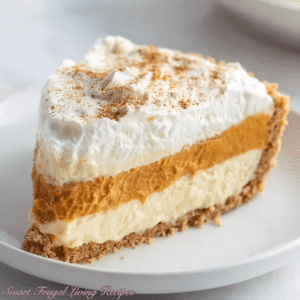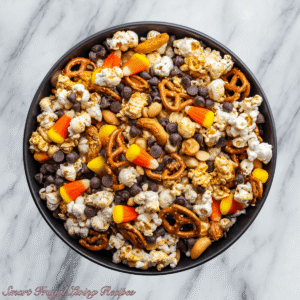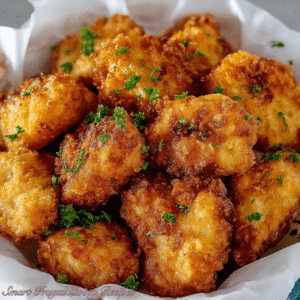Why This Pan-Seared Salmon Wins Busy Weeknights (and Date Nights)
There’s something magical about a perfectly pan seared salmon with lemon garlic butter sauce — the crispy golden crust, the tender, flaky interior, and that luscious, velvety sauce that clings to every bite. It’s one of those dishes that looks and tastes restaurant‑worthy, yet it’s surprisingly easy to make at home. This recipe is my go‑to whenever I want to impress guests or treat myself to a quick but luxurious dinner after a long day.
Salmon has long been celebrated for its rich flavor and health benefits. It’s packed with omega‑3 fatty acids, protein, and vitamins that make it both nourishing and satisfying. When seared just right, it develops a delicate crust that locks in moisture while creating a delightful contrast of textures. The magic happens when you introduce the lemon garlic butter sauce: a simple blend of zesty lemon, melted butter, and aromatic garlic that infuses the fish with brightness and depth.
I first stumbled upon a variation of this recipe while exploring classic fish‑searing technique (great primer on pan‑searing here from Serious Eats: how to pan‑sear fish). Over the years, I’ve tweaked it to suit my style — using a little extra garlic, fresh parsley, and just enough lemon juice to keep things lively without overpowering the buttery richness. It’s a dish that feels both indulgent and balanced.
If you’re new to cooking salmon, don’t worry — it’s simpler than you think. With a few tips on timing and temperature, you’ll soon master this recipe and make it a staple. If you love bright, buttery seafood dishes, you might also enjoy browsing the salmon collection at BBC Good Food for more inspiration. But for now, let’s dive into this irresistible combination of pan‑seared perfection and silky lemon‑garlic bliss.
Your At‑a‑Glance Recipe Card (Everything You Need to Start Cooking)
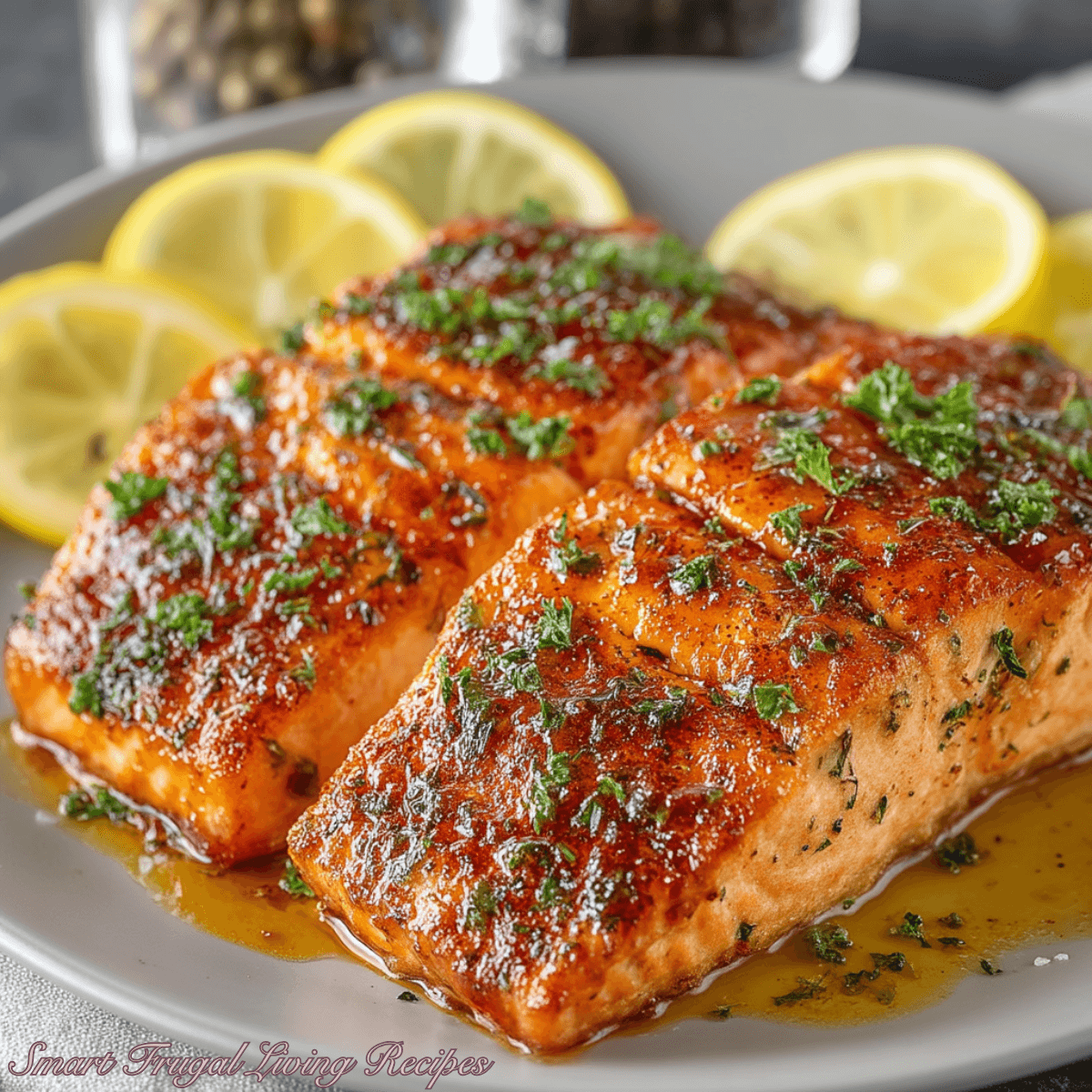
Pan Seared Salmon with Lemon Garlic Butter Sauce
Ingredients
Method
- Prep the salmon. Pat salmon dry with paper towels. Season both sides with salt and pepper. Drizzle 1 tablespoon lemon juice over the filets; let sit 5 minutes while you heat the pan.
- Heat the skillet. In a large nonstick or cast‑iron skillet, heat olive oil over medium‑high until shimmering.
- Sear side one. Place salmon filets presentation‑side down. Cook 3–4 minutes, undisturbed, until deeply golden and the fish releases easily.
- Flip and finish. Turn the filets and cook 3–4 minutes more, until the center reaches 125°F for medium (or to your preferred doneness). Transfer to a plate.
- Build the sauce. Lower heat to medium. Add butter; when melted and foamy, stir in garlic. Cook 30–45 seconds until fragrant (don’t brown it).
- Brighten and herb it. Stir in remaining lemon juice and 2 tablespoons parsley. Simmer 1–2 minutes to slightly thicken.
- Coat the salmon. Return salmon to the pan; spoon sauce over filets. Tuck in the lemon slices. Warm 1 minute.
- Serve. Plate salmon, spoon over extra sauce, and sprinkle with remaining parsley.
Notes
- Active vs. passive time: About 10 minutes actively at the stove; a 5‑minute brief rest/season step is passive.
- Pan choice: Cast iron delivers the most even browning; stainless works too; nonstick is the easiest for beginners.
- Butter control: Use unsalted butter to fine‑tune salt levels.
- Temperature tip: Pull salmon a few degrees early — carryover heat finishes it.
- Optional splash: A tablespoon of dry white wine or low‑sodium broth adds restaurant‑style roundness to the sauce.
Leveling Up: Pro Tricks That Take This Salmon from Great to Wow
Chasing the Perfect Crust Without Overcooking the Center
Getting that shattering crust while keeping the middle succulent is all about moisture management and heat control. Pat the fish extra dry (top and sides), then let it air‑dry on a rack for 10 minutes if time allows. Preheat your skillet longer than you think — I wait until a drop of water skitters. Use just enough oil to thinly coat the pan, then lay the salmon away from you. Don’t poke! The fish will release when the Maillard reaction has done its thing. If the crust is done before the interior, finish the fish for 2–3 minutes in a 300°F oven.
Staggering the Garlic for Layered, Restaurant‑Depth Flavor
I like to divide the garlic into two parts. Half goes in right after the butter foams, building a mellow, nutty base. The second half goes in during the last 20–30 seconds, preserving fresh pungency. The result is a sauce with bass notes and sparkle — like two instruments playing the same melody. If you’re sensitive to sharp garlic, blanch the raw portion in boiling water for 15 seconds first; you’ll keep brightness without the bite.
Balancing Lemon’s Brightness with Silky Butter
Butter and lemon are best friends, but balance is everything. Start with the called‑for juice, then taste and adjust. If the lemon tastes aggressive, whisk in a teaspoon of cold butter off the heat to soften the edges (a mini‑monté au beurre). If it tastes flat, a pinch of salt or a tiny splash of white wine vinegar can wake it up. I also love adding the zest of 1/4 lemon for aroma without extra acidity.
Harnessing Carryover Heat for Foolproof Doneness
Fish keeps cooking after it leaves the pan. For flaky but moist salmon, aim to pull the filets at 120–125°F, then let them sit while you build the sauce. By the time you rewarm them in the sauce, they’ll land around 125–130°F. If you prefer a medium‑well texture, give them an extra minute in the pan or finish gently in the oven. Either way, carryover is your friend: it protects juiciness and prevents that dreaded chalky bite.
Using Fresh Herbs Like a Pro (Parsley, Chives, or Dill)
Fresh parsley is classic, but you can tailor the herb profile to the rest of your meal. Chives add a grassy onion note that sings with lemon; dill leans Nordic and pairs beautifully with simple potatoes; basil leans summery and sweet. Whatever you choose, add most of the herbs at the end so they stay vivid and aromatic. I’ll often reserve a teaspoon of raw herbs to sprinkle right at the table — the steam lifts their perfume as you dig in.

Leftovers You’ll Love: Smart Storage, Reheat, and Make‑Ahead Tips
Keeping That Lemon‑Garlic Aroma Bright on Day Two
Store leftover salmon and sauce together so the flavors continue to mingle. Let everything cool to room temperature (no longer than 30 minutes), then transfer to a shallow, airtight container. I like to spoon the sauce over the top to create a moisture “blanket.” Refrigerate up to 3 days. When reheating, add a teaspoon of water or broth to loosen the sauce and revive the lemon’s zing.
Reheating Without Drying Out Your Perfectly Cooked Fish
The microwave can be harsh on seafood, but you can make it work. Cover the salmon and heat at 50% power in 20–30‑second bursts, basting with sauce between bursts. Even better: rewarm in a covered skillet over low heat with a splash of water, letting gentle steam do the work. The sauce will emulsify again and the fish will stay silky. Avoid high heat or the proteins will tighten and turn chalky.
Freezing for Later Without Losing Texture
Cooked salmon freezes reasonably well if you protect it from freezer burn. Portion it with sauce into freezer‑safe bags, press out extra air, and freeze flat for up to 2 months. Thaw overnight in the fridge, then rewarm gently as above. If you plan to freeze from the start, slightly undercook the salmon by 1 minute; it will finish during reheating and taste freshly cooked.
Make‑Ahead Meal Prep (Sauce Now, Sear Later)
You can prep the sauce base up to 3 days in advance: melt butter, lightly cook half the garlic, and add half the lemon juice. Cool, refrigerate, then rewarm and add the remaining garlic and lemon juice when you sear. Portion raw, seasoned salmon in the fridge for up to 24 hours (on a rack over a tray to stay dry). When dinner time comes, you’re 10 minutes from the table.
Packing Salmon for Work Lunches That Still Taste Special
For portable lunches, flake the salmon into large chunks, toss gently with a spoonful of sauce, and pack over room‑temperature couscous or quinoa. Include a lemon wedge and a little container of chopped herbs to add right before eating. This avoids reheating entirely, keeps the fish moist, and makes your desk lunch feel like a café moment.
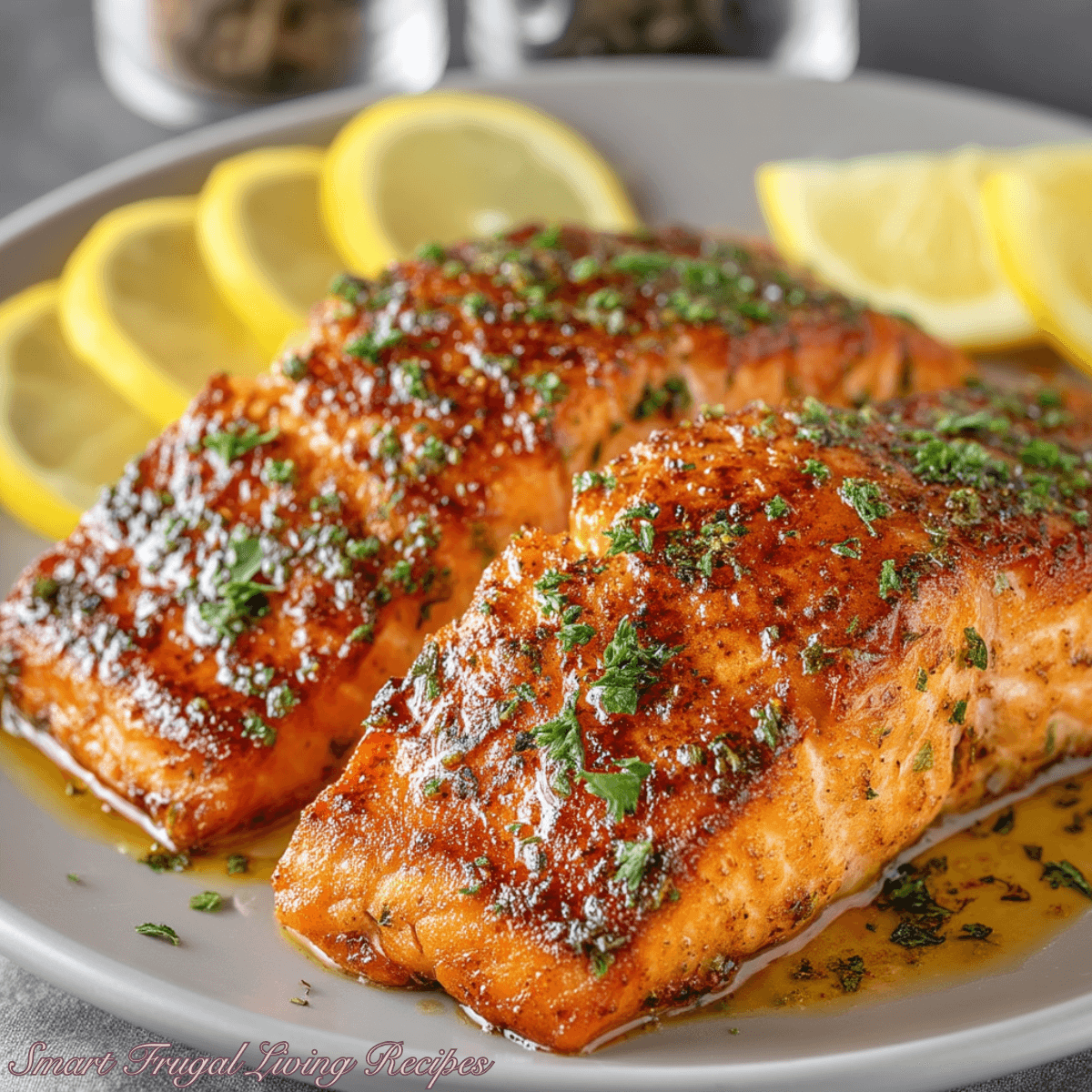
Cook for Everyone: Easy Dietary Swaps That Actually Work
Making It Dairy‑Free Without Losing that Buttery Luxury
Swap the butter for a high‑quality plant‑based butter or use 2 tablespoons extra‑virgin olive oil plus 1 teaspoon dairy‑free butter flavor (optional). For richness, whisk in a teaspoon of tahini or a splash of full‑fat coconut milk off heat. Season with a pinch of nutritional yeast for savory depth. The lemon and garlic do the heavy lifting, so you won’t miss the dairy.
Gluten‑Free Made Simple (It Mostly Is Already!)
This recipe is naturally gluten‑free as written. If you choose to lightly dust the salmon with flour for extra crust, opt for superfine rice flour or a gluten‑free all‑purpose blend. If adding wine, confirm it’s gluten‑free (most are). Serve with polenta, roasted potatoes, or rice to keep the entire meal GF‑friendly.
Low‑Carb and Keto Tips While Keeping Bright Flavor
Salmon fits beautifully into low‑carb lifestyles. Keep the sauce as written and pair with garlicky sautéed greens, zucchini noodles, or a crisp salad. To bump fats, swirl in an extra teaspoon of butter at the end or finish with a drizzle of olive oil. A sprinkle of toasted almonds adds crunch without carbs.
Sodium‑Sensitive Adjustments That Don’t Taste Like “Diet Food”
Use unsalted butter and skip salting the fish at first. Instead, season the sauce with lemon and herbs, then add salt only if needed after tasting. A few capers bring briny pop without much sodium; so does a squeeze of lemon to amplify perception of saltiness. Remember that freshly cracked pepper and parsley add big flavor without sodium.
Allium‑Free or Low‑Garlic for Sensitive Stomachs
If garlic is tricky for you, try infusing the butter with smashed garlic cloves and then removing them before serving — you’ll keep the aroma with far less FODMAP load. Or use garlic‑infused olive oil and skip the chopped cloves entirely. A pinch of asafoetida (hing) can mimic that savory depth in tiny amounts.
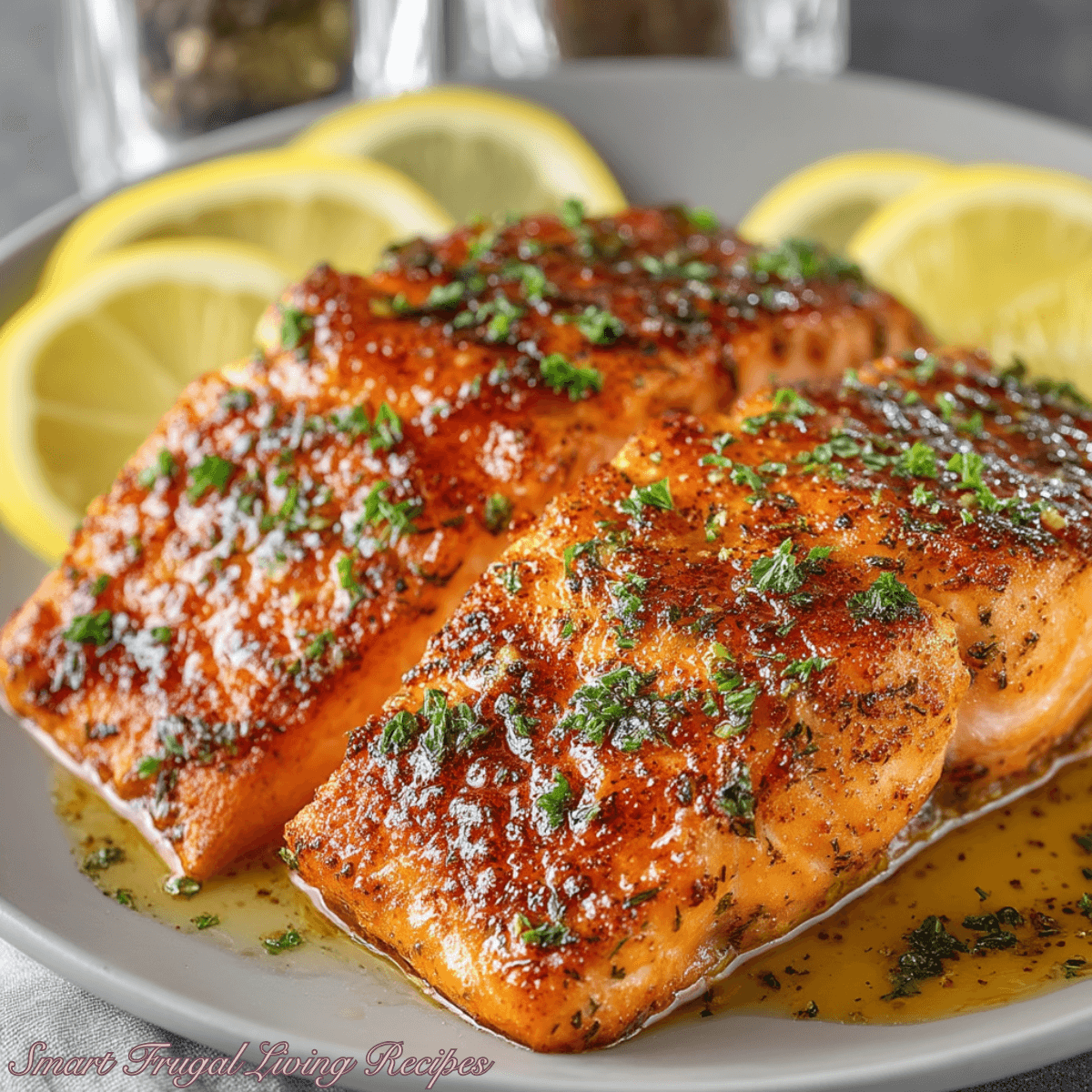
Your Questions Answered: Real‑World Troubleshooting and Tips
How do I keep the salmon from sticking to the pan when I flip it?
Sticking usually means the pan or oil wasn’t hot enough, or the fish wasn’t ready to release. Preheat the pan thoroughly and wait for the oil to shimmer. Lay the fish in and don’t move it for 3–4 minutes. Test by nudging with a thin spatula; if it clings, give it another 30 seconds. Patting the fish very dry and using a quality stainless or seasoned cast‑iron pan also helps.
Can I use skin‑on salmon for extra flavor and ease?
Absolutely. Skin‑on gives a built‑in shield against overcooking and adds delicious texture when crisped. Sear skin‑side down first for 5–6 minutes to render fat and crisp the skin, then flip for 1–2 minutes to finish. Serve skin‑side up so it stays crunchy. Everything else about the lemon garlic butter sauce stays the same.
What sides make this feel like a complete restaurant plate?
I love pairing with roasted baby potatoes, lemony asparagus, blistered green beans, or a simple arugula salad with shaved Parmesan. For something cozy, creamy polenta or mashed cauliflower is dreamy with the sauce. If you want grains, herbed couscous or wild rice soak up every drop.
Can I swap in another fish if I don’t have salmon?
Yes! Trout, arctic char, halibut, and even thick cod loins respond beautifully to the same method. Adjust cooking time based on thickness — thinner fillets may need just 2–3 minutes per side. Oily fish like char mimic salmon’s richness; leaner fish benefit from an extra teaspoon of butter whisked into the sauce.
Is it okay to marinate the salmon in lemon beforehand?
A quick drizzle of lemon right before cooking (as in the recipe) is perfect. Long marinades with lots of acid can start to “cook” the fish and make the surface mushy. If you want more citrus, add zest to the sauce or finish with an extra squeeze at the table. That keeps texture pristine and flavor bright.
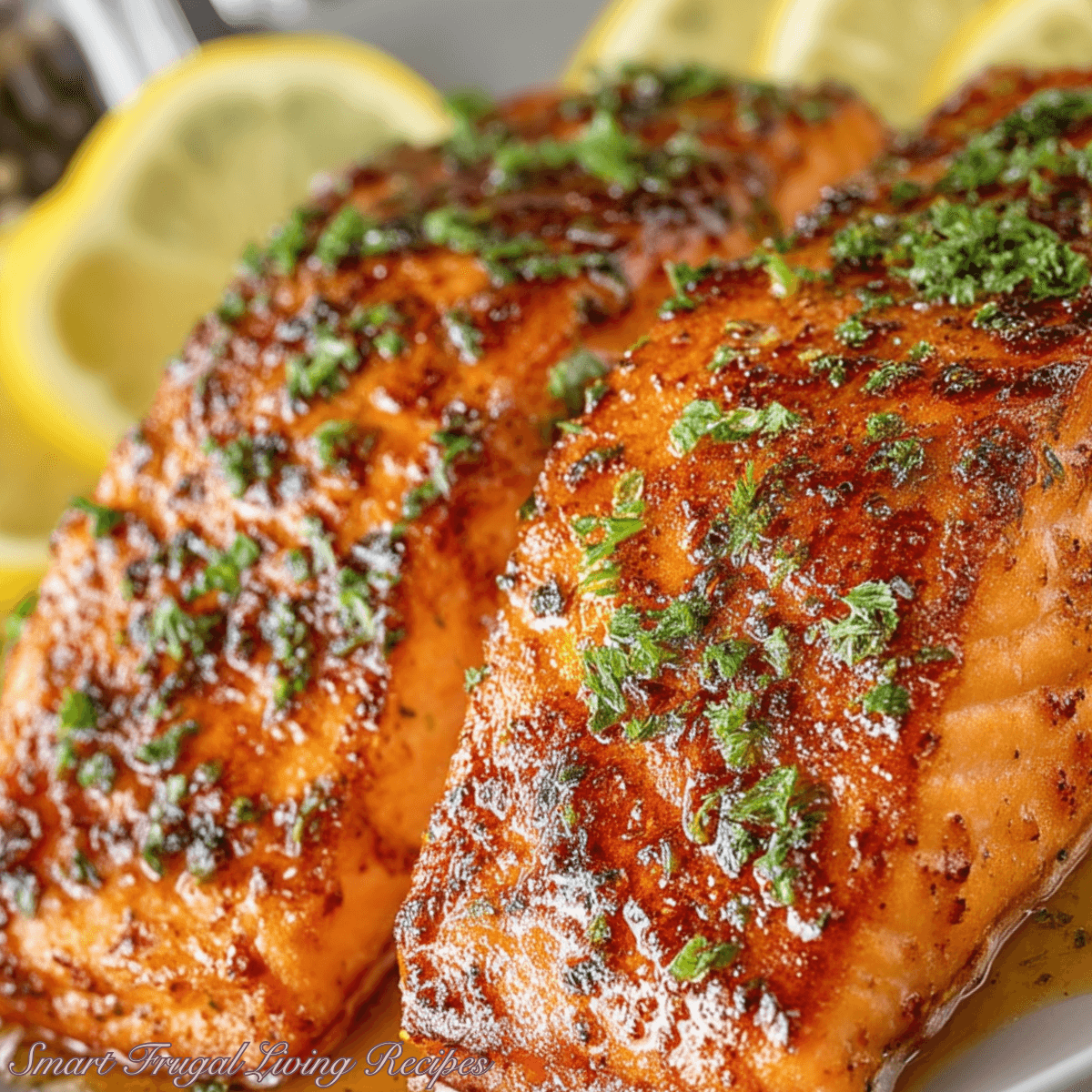
Wrapping It Up: Why This Pan‑Seared Salmon Deserves a Spot in Your Regular Rotation
When I think about weeknight dinners that deliver big results for minimal effort, pan seared salmon with lemon garlic butter sauce is always near the top of the list. It’s fast — truly on the table in about 25 minutes — but feels celebratory thanks to that glossy, aromatic sauce and the irresistible contrast of crisp edges and tender flesh. The technique is forgiving, too. Once you’ve learned to dry the fish well, preheat the pan properly, and let the salmon release naturally, you’ll be rewarded with consistent results every time.
Beyond speed and reliability, there’s the sheer versatility. This salmon loves almost any side — from spring vegetables and bright salads to fall grains and cozy potatoes. The sauce is a friendly canvas for personalization: swap herbs based on what’s in your garden, add a splash of wine for elegance, or toss in capers for briny punctuation. It’s the kind of recipe that grows with you as a cook.
I also appreciate how well it fits different lifestyles and needs. Whether you’re cooking dairy‑free, low‑carb, or gluten‑free, small tweaks keep all the flavor while meeting your goals. And leftovers are genuinely exciting here — flaked over greens with the lemony butter spooned on top, lunch tastes like something you’d order at a café.
If you’ve been searching for a reliable seafood staple that tastes special without asking much of you, this is it. Pull out a skillet, grab a couple of lemons and a handful of parsley, and let the aroma of sizzling garlic lead the way. I have a feeling this will become one of those recipes you know by heart — the kind that makes dinner feel easy, elegant, and entirely doable on any night of the week.

